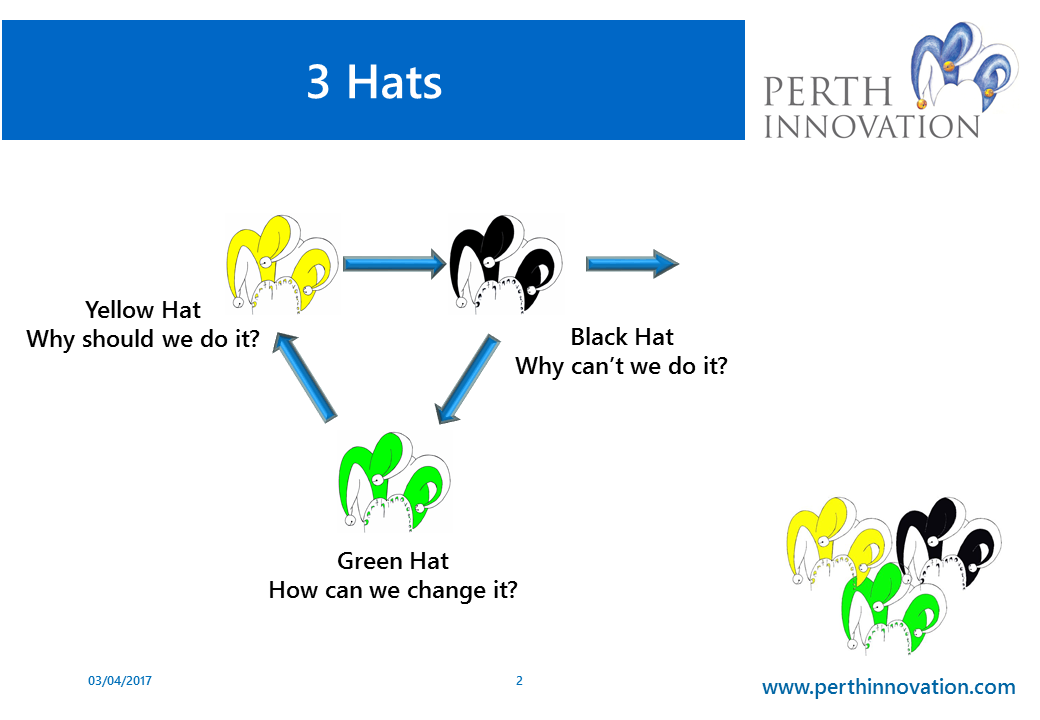
In a training workshop a few years ago I was asked "If you could only use one of these tools from now on, which would you choose?" Without hesitation I answered "3 Hats". Ideation is relatively easy, but the original, "raw", idea is seldom an instant solution to the problem. Usually, there are challenges that will prevent you from using the idea. In most cases, these ideas will be dropped in favour of ideas that are easier to do, even when they do not give a full solution. However, the development step is essential in growing these ideas into concepts that can give a viable solution to the problem. 3-Hats is a powerful tool for doing this.
The 3-Hats process uses Edward de Bono's Six Thinking Hats approach to explore and grow an idea. The three hats used are:
The process simply uses the three hats in turn – Yellow Hat then Black Hat then Green Hat. After the Green Hat we decide which of the proposed changes we are going to keep and which we will put aside for the time being. We then return to the Yellow Hat to check that the modified idea still has the same benefits (or possibly even new benefits). This is followed by another round with the Black Hat to check that we have eliminated the issues. Most likely, some issues will remain, or there will be new ones. If that is the case, then we go back to the Green Hat and look for more changes. This cycle is repeated until all the Black Hat issues have been eliminated or at least reduced to an acceptable size.
If you have found this blog of value, then why not subscribe to our Newsletter to ensure that you do not miss any future blogs.
PMI Aberdeen EventBlinking Fast and Slow (The importance of cognitive ...
There are stories, going back to ancient Greece, of dolphins helping stranded ...
Her: So, what do you do?Me: I help companies to think out of the box and act in ...
In my work, I have frequent discussions with people about innovation. These ...